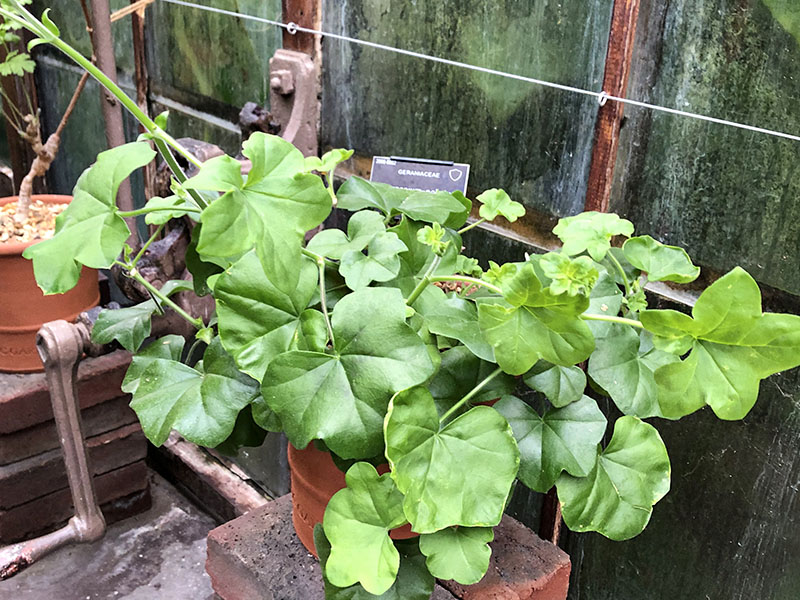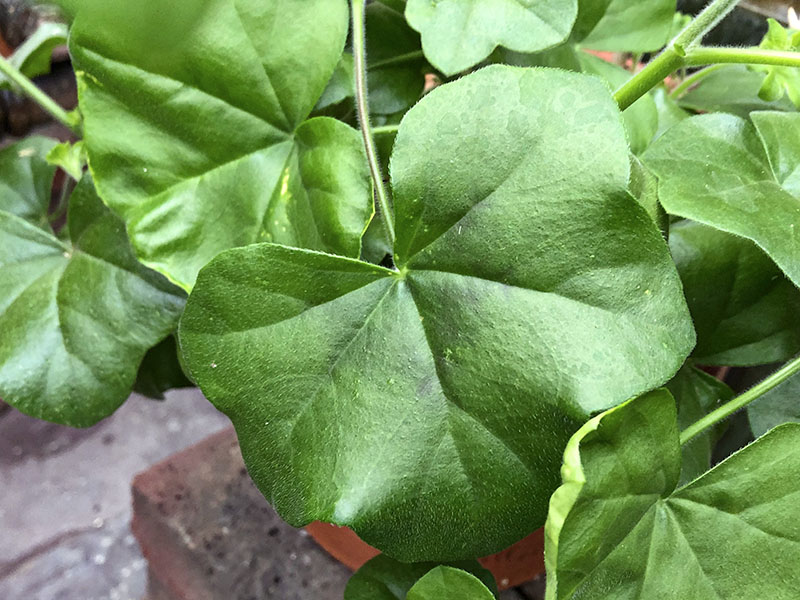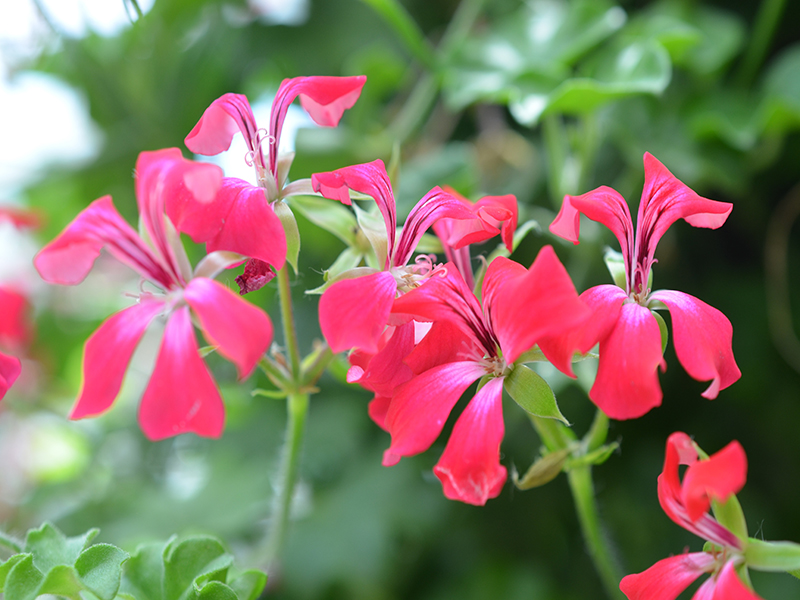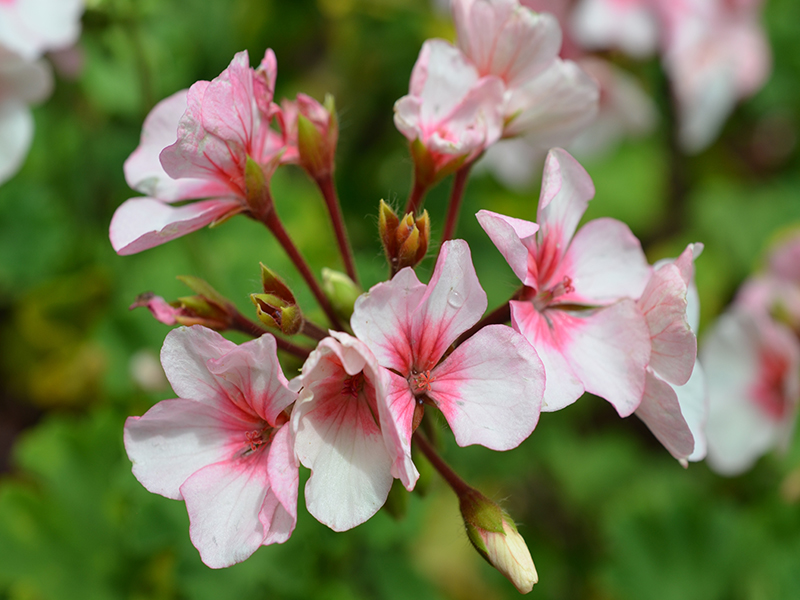
Perennials, Tropicals > Pelargonium > Pelargonium peltatum > Pelargonium peltatum
Pelargonium peltatum
Ivy-leaved Geranium, Ivy Geranium
Origin: Native to Southern Africa.
| Family |
| Geraniaceae |
| Genus |
| Pelargonium |
| Species |
| peltatum |
| Category |
| Perennials, Tropicals |
| USDA Hardiness Zone |
| 10a - 11 |
| Canadian Hardiness Zone |
| Requires cold season protection under glass. |
| RHS Hardiness Zone |
| H3 - H1c |
| Temperature (°C) |
| -1.1 to above 4.5 |
| Temperature (°F) |
| 34 to 50 |
| Height |
| 30 - 60 cm |
| Spread |
| 30 - 90 cm |
Photographs
Description and Growing Information
Flowering Period
| General Description |
| The vines have soft, wide leaves stemming individually along it. |
| Landscape |
| Best in hanging baskets, containers and window boxes. May be grown in beds or borders as an annual ground cover. |
| Cultivation |
| Grow in average to organically rich, medium moisture, well-drained soils with a neutral to slightly alkaline pH. Water regularly during the growing season. Best in full sun, but appreciates some light shade in the heat of the day. |
| Shape |
| Trailing. |
| Growth |
| Fast |
| ID Characteristic |
| Many of the ivy geraniums sold in commerce today are hybrids in which P. peltatum is a main parent. |
| Pests |
| No notable pests or diseases. |
| Habitat |
| Grows in scrub along coasts, or dry, rocky hillsides. |
| Bark/Stem Description |
| Brittle, trailing stems that spread to as much as 90 cm wide. |
| Leaf Description |
| Thick, lobed, medium green, ivy-like leaves. |
| Flower Description |
| Clusters of single or double flowers in shades of red, pink, lilac or white. |
| Notable Specimens |
| Royal Park Rajapruek, Mae Hia, Thailand. Chelsea Physic Garden, London, United Kingdom. |
| Propagation |
| Usually by stem cuttings but also via seed. |



